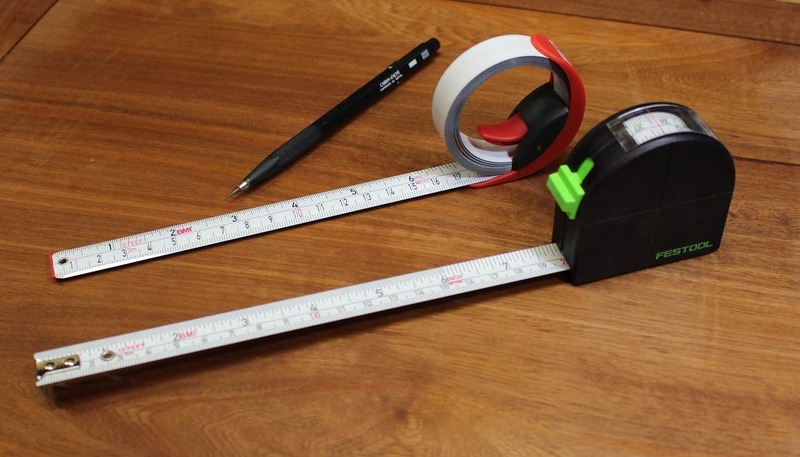Mike and all ...
I have not had the Hultafors very long - a couple of months - and it is evident that it works differently from all other tapes.
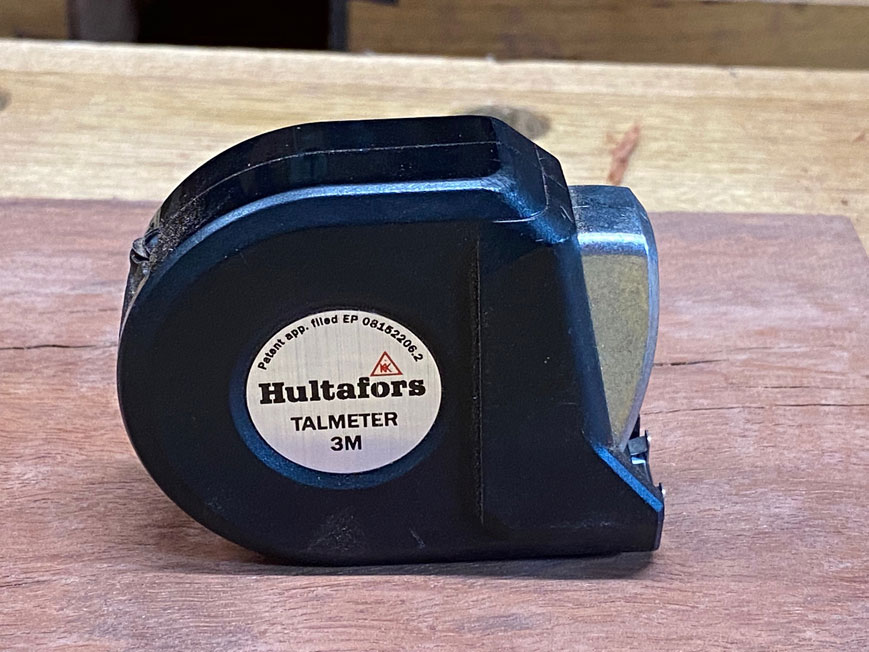
At the heart of the tape is the lock. Press it down to pull out the blade, then release the lock .... and it is LOCKED. The position is not going to change ... a lot like Jacob

There are two ways to use the tape as a measuring device - using the front hook, which is fixed - unlike other tapes, which have a sliding hook for inside and outside measurement. Here you can see the thickness of the hook.
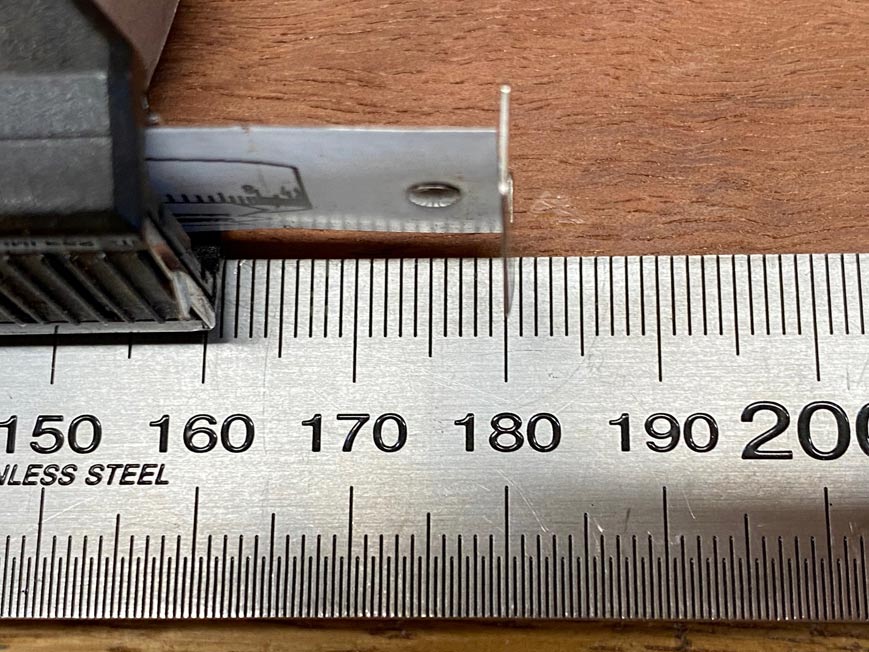
Or using the rear hook, which is also fixed, but tucked away until needed ..

The blade has two scales on it. The black scale is for the front hook, and the red scale is for the rear hook ...
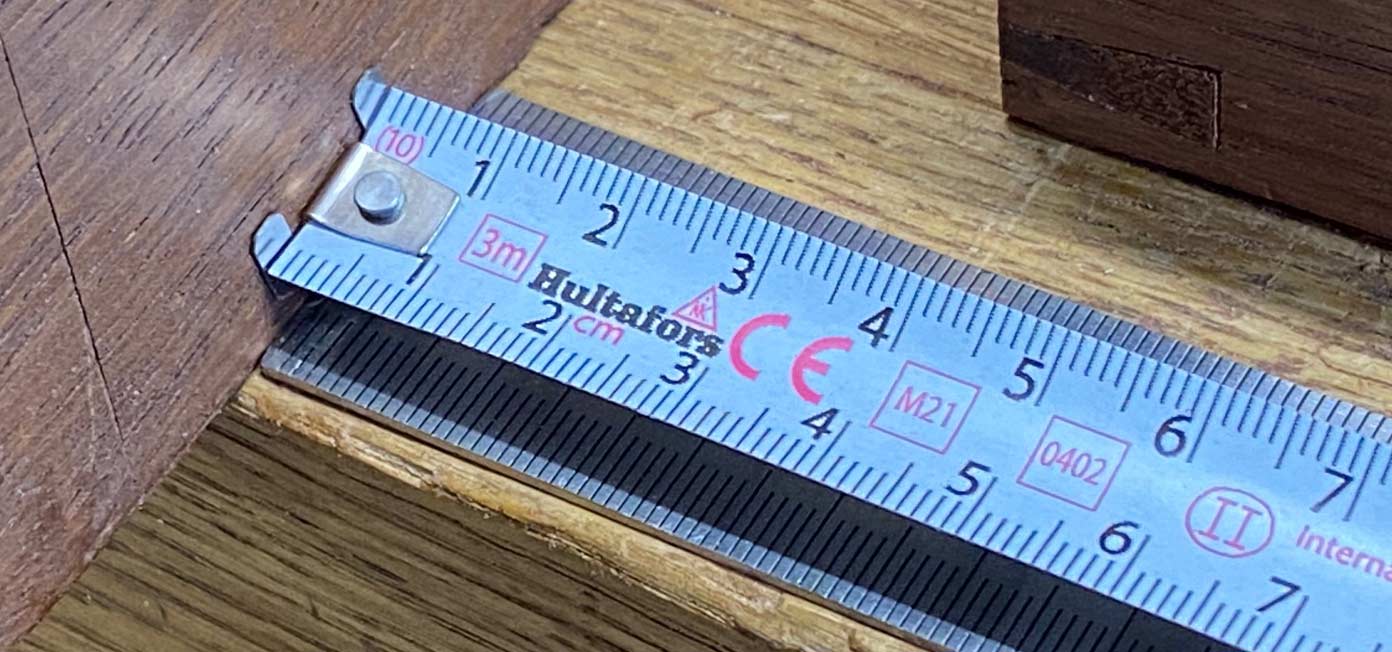
Let's measure this board (with dovetails on one end) ...
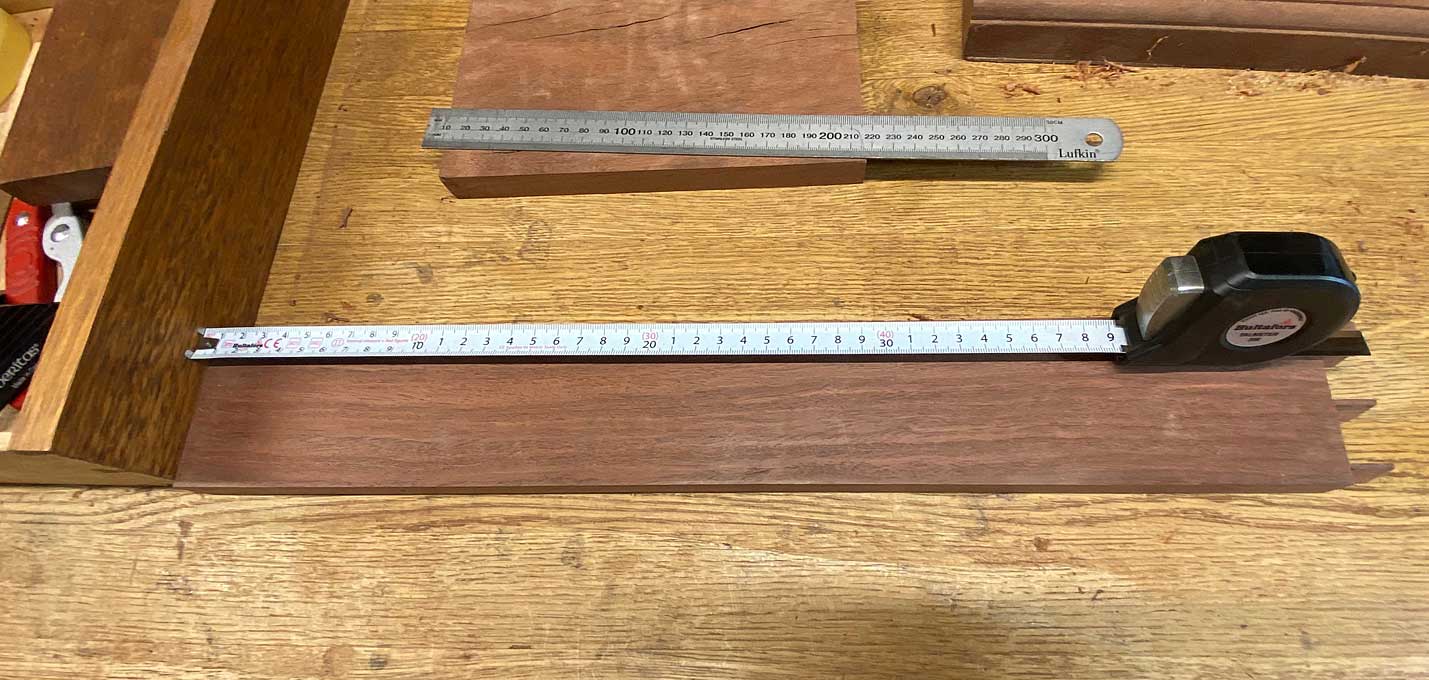
The usual way is to hang the hook over the one end ...
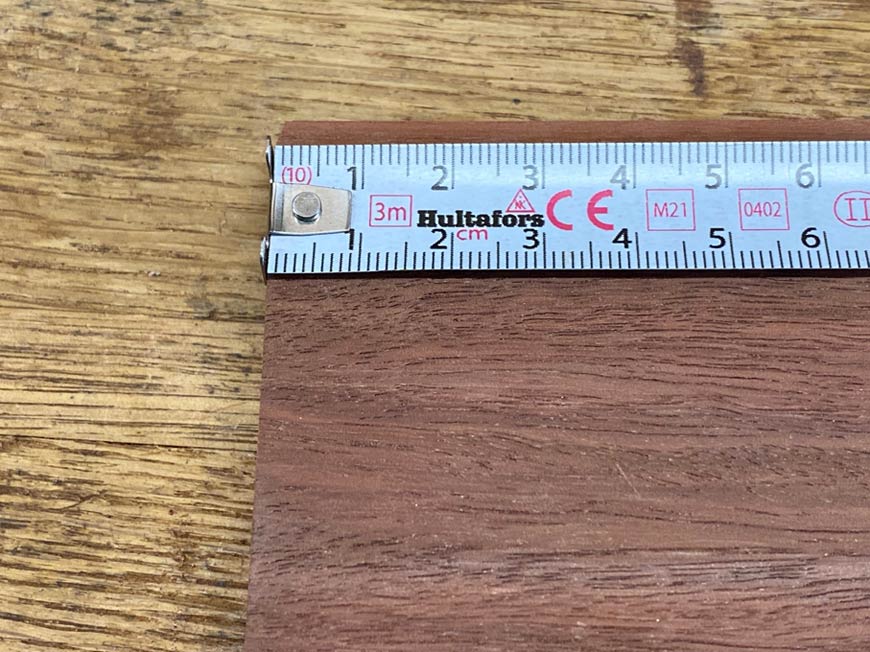
.. and then pull the tape over the other end. The start of the tape body marks the length (Black scale).
What of inside measurements? The first thing you do is unfurl the rear hook. Then push that end against the one internal wall, and extend the blade to the other wall.
Here is the rear hook (for demonstration, out in the open - it has a stop) ..

Other end ...
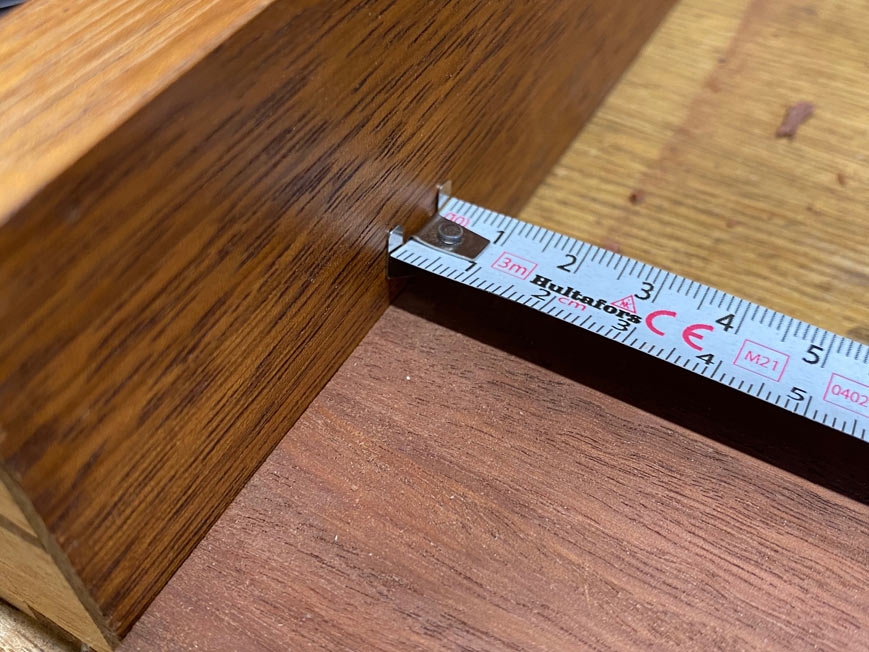
Scales in different colours. The red scale, which includes the 100mm rear extension and hook, is 100mm shorter than the black scale ...
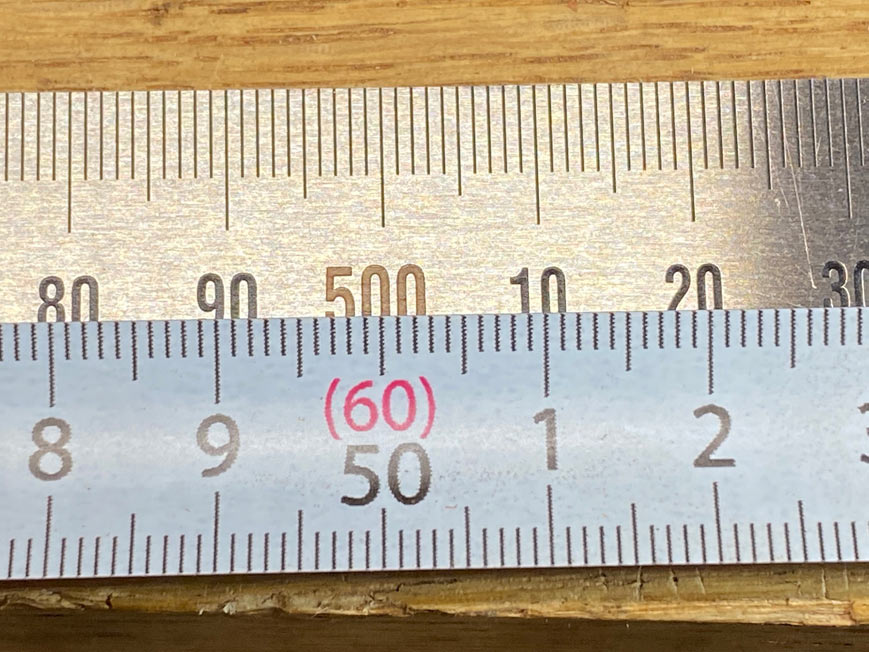
Regards from Perth
Derek

































